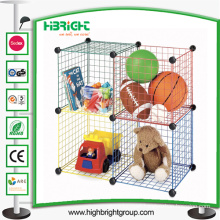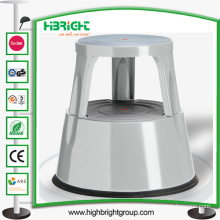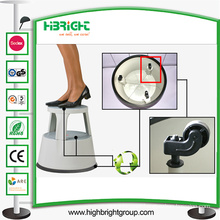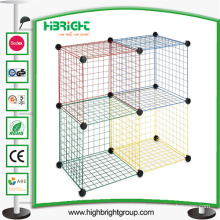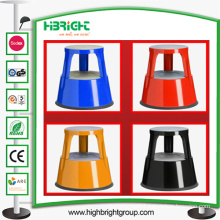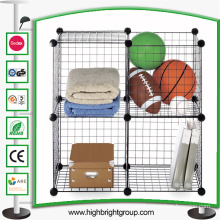Bags and boxes are the oldest methods of packaging items. Because bags have many advantages, they are still widely used in the packaging field. The bag has the basic function of the package, and the cheapest price; it can be used for transport packaging, but also for sales and packaging; it has a wide range of sizes, a variety of materials for selection, a wide range of adaptation, can be packaged solid Materials can also be packaged with liquid materials; bagging products have the smallest ratio of gross weight to net weight, regardless of whether empty bags or packages occupy less space; the bags themselves are lightweight and can reduce freight costs. It can be said that bags can be compared with other packaging. However, after bagged items, most of them cannot stand upright on the shelf like some rigid and semi-rigid packages; its sealing edges and wrinkles affect the appearance; compared with rigid and semi-rigid container packages, the strength is poor and the package is short-lived.
First, bag classification bags can be divided into two categories: large bags and small bags.
1. The big bag is also a weighing bag with a weight of 20-50 kg for transport packaging of industrial and agricultural products. Such as cement, chemical raw materials, fertilizers, feed, flour, grain and sugar. According to the classification of bag materials, large bags are the following: multi-layer paper bags made of kraft paper; fabric bags made of cotton, hemp, grass fiber and chemical fiber, such as sacks, cloth bags and straw bags; plastic bags , made of plastic film; plastic woven bags, cut into thin strips with polyolefin and other plastic films and heated and stretched, so that the thin strips are oriented and then woven into bags; non-woven fabric bags, made of polyolefin fibers, etc. Not made of textiles or knits; there are multi-layer composite bags made of paper, plastic, aluminum foil, etc.
There are two basic types of bags: one is called an open bag, and only one end is closed when the bag is made, and the other end can be completely opened to fill the material; the other is called a valve bag, and both ends are used when bagging. Closed, only a small hole on one end of the bag, filled with a filling tube into the bag to fill the material.
2. The pouches are used for sales and packaging, and have a wide range of applications. Among them, foods and daily necessities are most used for packaging, and can also be used for packaging small industrial products such as screws and nuts, electrical components, and gadgets.
According to the classification of bagging methods, there are two types of bags: prefabricated bags and bag-filling bags.
(1) Prefabricated pouch Prefabricated pouch is made by hand or bag making machine before packaging. It is supplied by bag making workshop or bag making. When filling materials, the bag mouth must be opened first and then sealed after filling; the prefabricated pouch is made of paper, Made of plastic and composite materials. Because of the different nature of materials, their forms are also different. Figure 10-21 shows the common form of paper pouches. Among them, (a) is a flat bag suitable for flat products;
(b) For the square bottom bag, thick or more items may be installed because of pleats on both sides;
(c) Automatically opening the bag, as long as holding the flap at the opening, the mouth of the bag opens, the bottom of the bag is rectangular, and the filling is very convenient;
(d) Sock-bottom bags, which can hold heavier items;
(e) For adhesive sleeve pockets, both ends are sealed, and one end of the bag is filled with a tube for filling. After filling, the tube is folded and sealed;
(f) is a bag-type bag with no pleats on both sides, but it is similar to (b)(c) and is easy to make. The above six kinds of paper bags are all open bags except (e). The openings and cuts of the mechanism paper bag are all serrated. Small paper bags are not transparent, and their barrier properties are inferior to those of plastics. Although prices are low, they are not used by ordinary manufacturers. It is mainly used for packaging of goods for customers in local retail stores.

Figure 10-22 shows the form of a commonly used preformed plastic pouch. Where (a) is a flat bag with lap joints on the back;
(b) Made of a cylindrical film with pleated bags on both sides;
(c) Two-sided seams with pleated bags at the bottom. The side of the opening is slightly longer for ease of opening;
(d) is a seam on both sides, with inwardly extending tongues near the opening, which can be used instead of sealing;
(e) is a seam on both sides with small holes at the opening for hanging;
(f) is a seam on both sides with tongues and buttons at the opening;
(g) for both sides of the seams, reinforced at the opening;
(h) is a bottom seam with a long round hole at the opening for easy carrying.

Prefabricated bags are made by hand or bag making machines. Unqualified bags can be removed before use, so the quality is easy to guarantee. The special bag-making mechanism bag is flat and beautiful, with firm seams and special-shaped bags. However, prefabricated bags are packaged using a bag filling machine, and need to be provided with a bag, a bag opening mechanism, etc. Therefore, the production efficiency is low.
(2) Bag-filling-sealing pouch This bag is continuously completed on a machine with a filling and sealing process. The finished bag has the following forms:
a. Pillow-shaped bag flat bag has pleated bag at the side of the longitudinal seam of the middle bag. The longitudinal seam of the pillow-shaped bag bag is butted at the middle of the bag. There is no longitudinal seam (with tubular film)
b. The three-seal pockets are folded in half with a roll of packaging material, and the sides are sealed with the openings.
c. Four-seal pockets use two rolls of wrapping material and are sealed on all four sides.
d. The standing pouches are made of three pieces of material, one piece is used for bottom sealing and can be erected after filling to facilitate display.
Figure 20-23 shows the bag type produced by the bag-filling packaging machine. Among them, (a) is a pillow-shaped lap joint flat bag;
(b) Side pleats for buttock joint butt joints;
(c) three-sided sealed flat bags;
(d) three-sided sealed flat bags;
(e) Four-sided sealed flat bags;
(f) Stand upright.

The process of bag filling and packing is arranged in a rational way. Therefore, materials, energy and labour are saved, productivity is high, and production costs are low. However, the disadvantage is that the defects on the bag cannot be found before the filling and they are excluded. The inspection can only be performed after the package is completed, which will result in some waste.
(To be continued)
